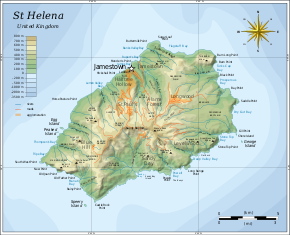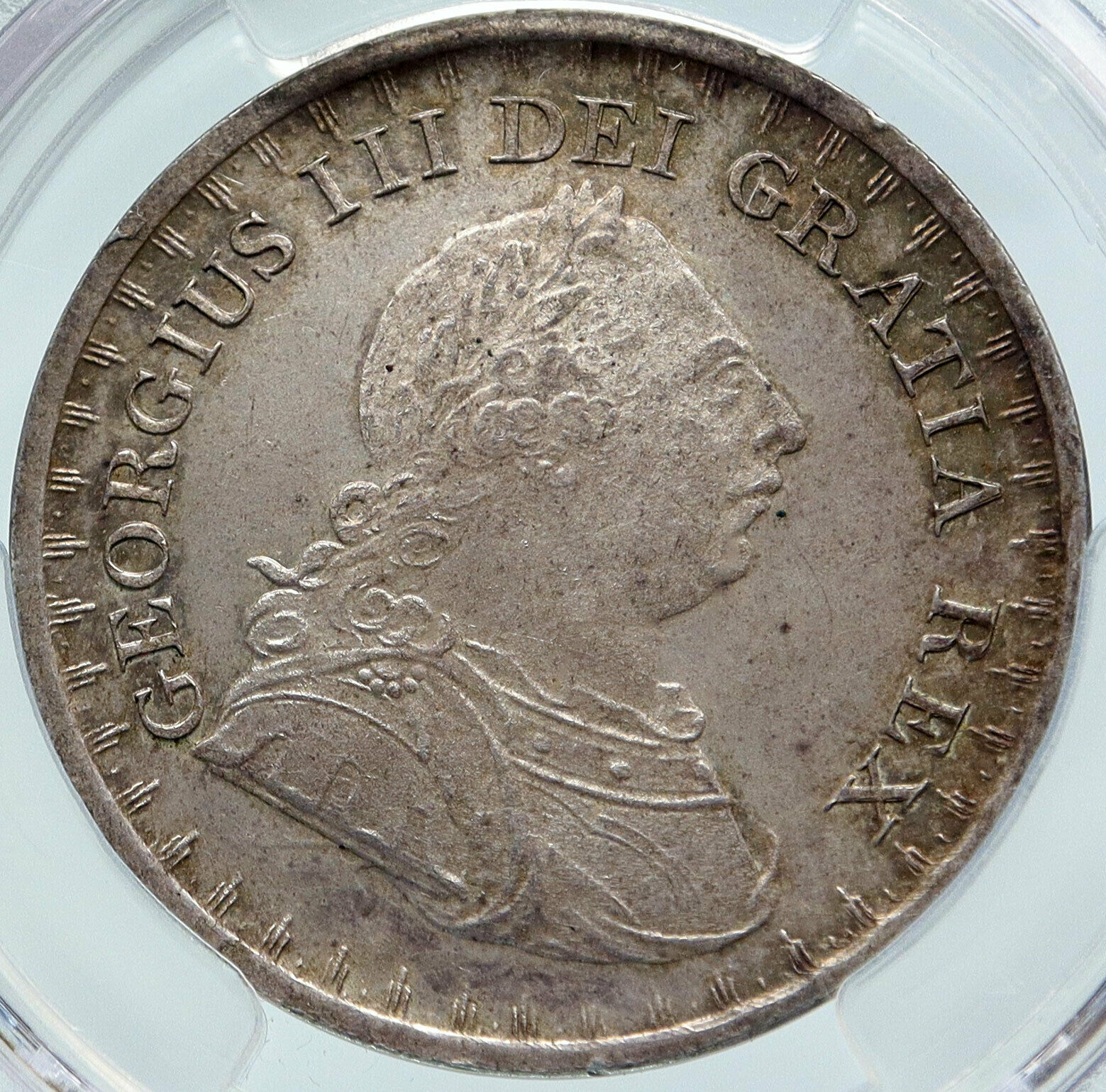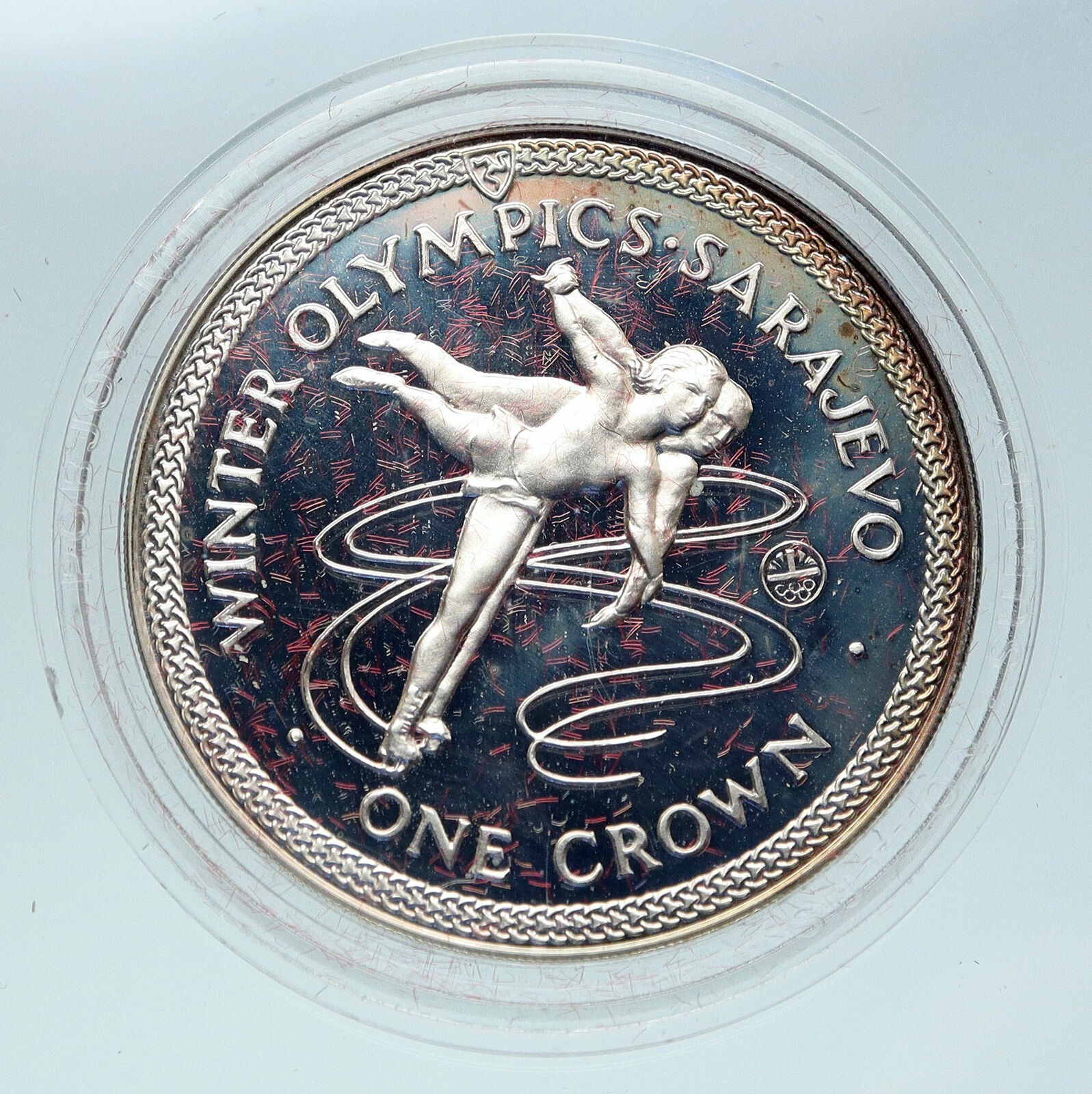|
Great Britain under under Elizabeth II – Queen: 6 February 1952 – present
Victory
2021 Proof Silver
Pound 38.61mm (31.30 grams) 0.999 Silver (1.00 oz. ASW)
Reference:
N# 282538 | Designer: Raphael David Maklouf
·£1· ST. HELENA· QUEEN ELIZABETH II · 2021 · ONE
OUNCE 999 SILVER, Elizabeth II facing right.
VICTORY THROUGH HARMONY E I C, Victory, modeled
after the Winged Angel at the top of Victoria
Memorial.
You are bidding on the exact item pictured, provided with a Certificate of Authenticity and Lifetime Guarantee of Authenticity.
  Saint Helena (/həˈliːnə/) is a remote volcanic tropical island in the South Atlantic Ocean, belonging to the United Kingdom. The island lies some 1,950 kilometres (1,210 mi) west of the coast of southwestern Africa, and 4,000 kilometres (2,500 mi) east of Rio de Janeiro on the South American coast. It is one of three British Overseas Territory grouped as Saint Helena, Ascension and Tristan da Cunha. Saint Helena measures about 16 by 8 kilometres (10 by 5 mi) and has a population of 4,534 (2016 census). It was named after Saint Helena of Constantinople. It is one of the most isolated islands in the world and was uninhabited when discovered by the Portuguese in 1502. It was an important stopover for ships sailing to Europe from Asia and Southern Africa for centuries. Saint Helena (/həˈliːnə/) is a remote volcanic tropical island in the South Atlantic Ocean, belonging to the United Kingdom. The island lies some 1,950 kilometres (1,210 mi) west of the coast of southwestern Africa, and 4,000 kilometres (2,500 mi) east of Rio de Janeiro on the South American coast. It is one of three British Overseas Territory grouped as Saint Helena, Ascension and Tristan da Cunha. Saint Helena measures about 16 by 8 kilometres (10 by 5 mi) and has a population of 4,534 (2016 census). It was named after Saint Helena of Constantinople. It is one of the most isolated islands in the world and was uninhabited when discovered by the Portuguese in 1502. It was an important stopover for ships sailing to Europe from Asia and Southern Africa for centuries.
 The island was the place of imprisonment of Napoleon by the British from 1815 to his death in 1821. Dinuzulu kaCetshwayo was imprisoned there (for leading a Zulu army against British rule), along with more than 5,000 Boers taken prisoner during the Second Boer War, including Piet Cronjé. The island was the place of imprisonment of Napoleon by the British from 1815 to his death in 1821. Dinuzulu kaCetshwayo was imprisoned there (for leading a Zulu army against British rule), along with more than 5,000 Boers taken prisoner during the Second Boer War, including Piet Cronjé.
Saint Helena is United Kingdom’s second-oldest overseas territory after Bermuda.
Under the provisions of the 1833 India Act, control of Saint Helena passed from the East India Company to the British Crown, and it became a crown colony. Subsequent administrative cost-cutting triggered a long-term population decline: those who could afford to do so tended to leave the island for better opportunities elsewhere. The latter half of the 19th century saw the advent of steamships not reliant on trade winds, as well as the diversion of Far East trade away from the traditional South Atlantic shipping lanes to a route via the Red Sea (which, prior to the building of the Suez Canal, involved a short overland section). So the number of ships calling at the island fell from 1,100 in 1855 to only 288 in 1889.
 In 1840, a British naval station established to suppress the African slave trade was based on the island, and between 1840 and 1849 over 15,000 freed slaves, known as “Liberated Africans”, were landed there. In 1840, a British naval station established to suppress the African slave trade was based on the island, and between 1840 and 1849 over 15,000 freed slaves, known as “Liberated Africans”, were landed there.
In 1858, the French emperor Napoleon III purchased, in the name of the French government, Longwood House and the lands around it, the last residence of Napoleon I (who died there in 1821). It is still French property, administered by a French representative and under the authority of the French Ministry of Foreign Affairs.
On 11 April 1898 American Joshua Slocum, on his famous and epic solo round-the-world voyage, arrived at Jamestown. He departed on 20 April 1898 for the final leg of his circumnavigation, having been extended hospitality by the governor, His Excellency Sir R A Standale. He presented two lectures on his voyage and was invited to Longwood by the French Consular agent.
In 1900 and 1901, over 6,000 Boer prisoners were held on the island, notably Piet Cronjé and his wife after their defeat at Battle of Paardeberg. The resulting population reached an all-time high of 9,850 in 1901.
A local industry manufacturing fibre from New Zealand flax was successfully re-established in 1907 and generated considerable income during the First World War. Ascension Island was made a dependency of Saint Helena in 1922, and Tristan da Cunha followed in 1938. During the Second World War, the United States built Wideawake airport on Ascension in 1942, but no military use was made of Saint Helena except maintenance of its defences.
During this period, the island enjoyed increased revenues from the sale of flax, with prices peaking in 1951. However, the industry declined because of transport costs and competition from synthetic fibres. The decision by the British Post Office to use synthetic fibres for its mailbags was a further blow, contributing to the closure of the island’s flax mills in 1965.
From 1958, the Union Castle shipping line gradually reduced its service calls to the island. Curnow Shipping, based in Avonmouth, replaced the Union-Castle Line mailship service in 1977, using the RMS (Royal Mail Ship) St Helena which was introduced in 1989.
|






 Saint Helena (/həˈliːnə/) is a remote volcanic tropical island in the South Atlantic Ocean, belonging to the United Kingdom. The island lies some 1,950 kilometres (1,210 mi) west of the coast of southwestern Africa, and 4,000 kilometres (2,500 mi) east of Rio de Janeiro on the South American coast. It is one of three British Overseas Territory grouped as Saint Helena, Ascension and Tristan da Cunha. Saint Helena measures about 16 by 8 kilometres (10 by 5 mi) and has a population of 4,534 (2016 census). It was named after Saint Helena of Constantinople. It is one of the most isolated islands in the world and was uninhabited when discovered by the Portuguese in 1502. It was an important stopover for ships sailing to Europe from Asia and Southern Africa for centuries.
Saint Helena (/həˈliːnə/) is a remote volcanic tropical island in the South Atlantic Ocean, belonging to the United Kingdom. The island lies some 1,950 kilometres (1,210 mi) west of the coast of southwestern Africa, and 4,000 kilometres (2,500 mi) east of Rio de Janeiro on the South American coast. It is one of three British Overseas Territory grouped as Saint Helena, Ascension and Tristan da Cunha. Saint Helena measures about 16 by 8 kilometres (10 by 5 mi) and has a population of 4,534 (2016 census). It was named after Saint Helena of Constantinople. It is one of the most isolated islands in the world and was uninhabited when discovered by the Portuguese in 1502. It was an important stopover for ships sailing to Europe from Asia and Southern Africa for centuries.  The island was the place of imprisonment of Napoleon by the British from 1815 to his death in 1821. Dinuzulu kaCetshwayo was imprisoned there (for leading a Zulu army against British rule), along with more than 5,000 Boers taken prisoner during the Second Boer War, including Piet Cronjé.
The island was the place of imprisonment of Napoleon by the British from 1815 to his death in 1821. Dinuzulu kaCetshwayo was imprisoned there (for leading a Zulu army against British rule), along with more than 5,000 Boers taken prisoner during the Second Boer War, including Piet Cronjé.  In 1840, a British naval station established to suppress the African slave trade was based on the island, and between 1840 and 1849 over 15,000 freed slaves, known as “Liberated Africans”, were landed there.
In 1840, a British naval station established to suppress the African slave trade was based on the island, and between 1840 and 1849 over 15,000 freed slaves, known as “Liberated Africans”, were landed there. 




